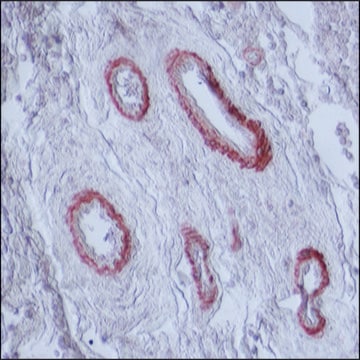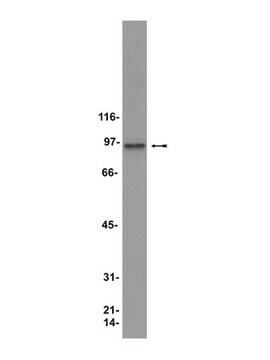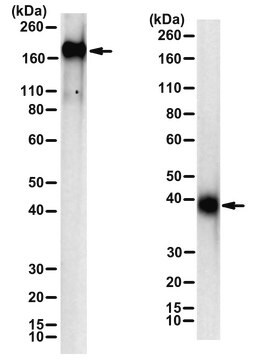MABC953
Anti-Prohibitin-2/PHB2 Antibody, clone 7F8E3
clone 7F8E3, from rat
Sinonimo/i:
Prohibitin-2, B-cell receptor-associated protein BAP37, D-prohibitin, Repressor of estrogen receptor activity, Prohibitin-2/PHB2
About This Item
Prodotti consigliati
Origine biologica
rat
Livello qualitativo
Forma dell’anticorpo
purified immunoglobulin
Tipo di anticorpo
primary antibodies
Clone
7F8E3, monoclonal
Reattività contro le specie
rat, monkey, human, mouse
tecniche
immunocytochemistry: suitable
immunohistochemistry: suitable (paraffin)
western blot: suitable
Isotipo
IgG2aκ
N° accesso NCBI
N° accesso UniProt
Condizioni di spedizione
wet ice
modifica post-traduzionali bersaglio
unmodified
Informazioni sul gene
human ... PHB2(11331)
Descrizione generale
Specificità
Immunogeno
Applicazioni
Apoptosis & Cancer
Apoptosis - Additional
Immunocytochemistry Analysis: 4 µg/mL from a representative lot detected Prohibitin-2/PHB2 in A431 and HUVEC cells.
Immunohistochemistry Analysis: A 1:1,000 dilution from a representative lot detected Prohibitin-2/PHB2 in human breast and mouse liver tissue.
Immunohistochemistry Analysis: A representative lot detected upregulated Prohibitin-2 immunoreactivity at the glutathione S-transferase placental-form–positive (GST-P+) hepatocellular carcinoma (HCC) foci in frozen liver sections from rats subjected to hepatocarcinogenesis induction by N-nitrosodiethylamine (DEN) and Phenobarbital (PB) treatment (Kakehashi, A., et al. (2011). Toxicol Sci. 119(1):61-72).
Qualità
Western Blotting Analysis: 0.5 µg/mL of this antibody detected Prohibitin-2/PHB2 in 10 µg of rat C6 glioma cell lysate.
Descrizione del bersaglio
Stato fisico
Stoccaggio e stabilità
Altre note
Esclusione di responsabilità
Non trovi il prodotto giusto?
Prova il nostro Motore di ricerca dei prodotti.
Codice della classe di stoccaggio
12 - Non Combustible Liquids
Classe di pericolosità dell'acqua (WGK)
WGK 1
Punto d’infiammabilità (°F)
Not applicable
Punto d’infiammabilità (°C)
Not applicable
Certificati d'analisi (COA)
Cerca il Certificati d'analisi (COA) digitando il numero di lotto/batch corrispondente. I numeri di lotto o di batch sono stampati sull'etichetta dei prodotti dopo la parola ‘Lotto’ o ‘Batch’.
Possiedi già questo prodotto?
I documenti relativi ai prodotti acquistati recentemente sono disponibili nell’Archivio dei documenti.
Il team dei nostri ricercatori vanta grande esperienza in tutte le aree della ricerca quali Life Science, scienza dei materiali, sintesi chimica, cromatografia, discipline analitiche, ecc..
Contatta l'Assistenza Tecnica.







